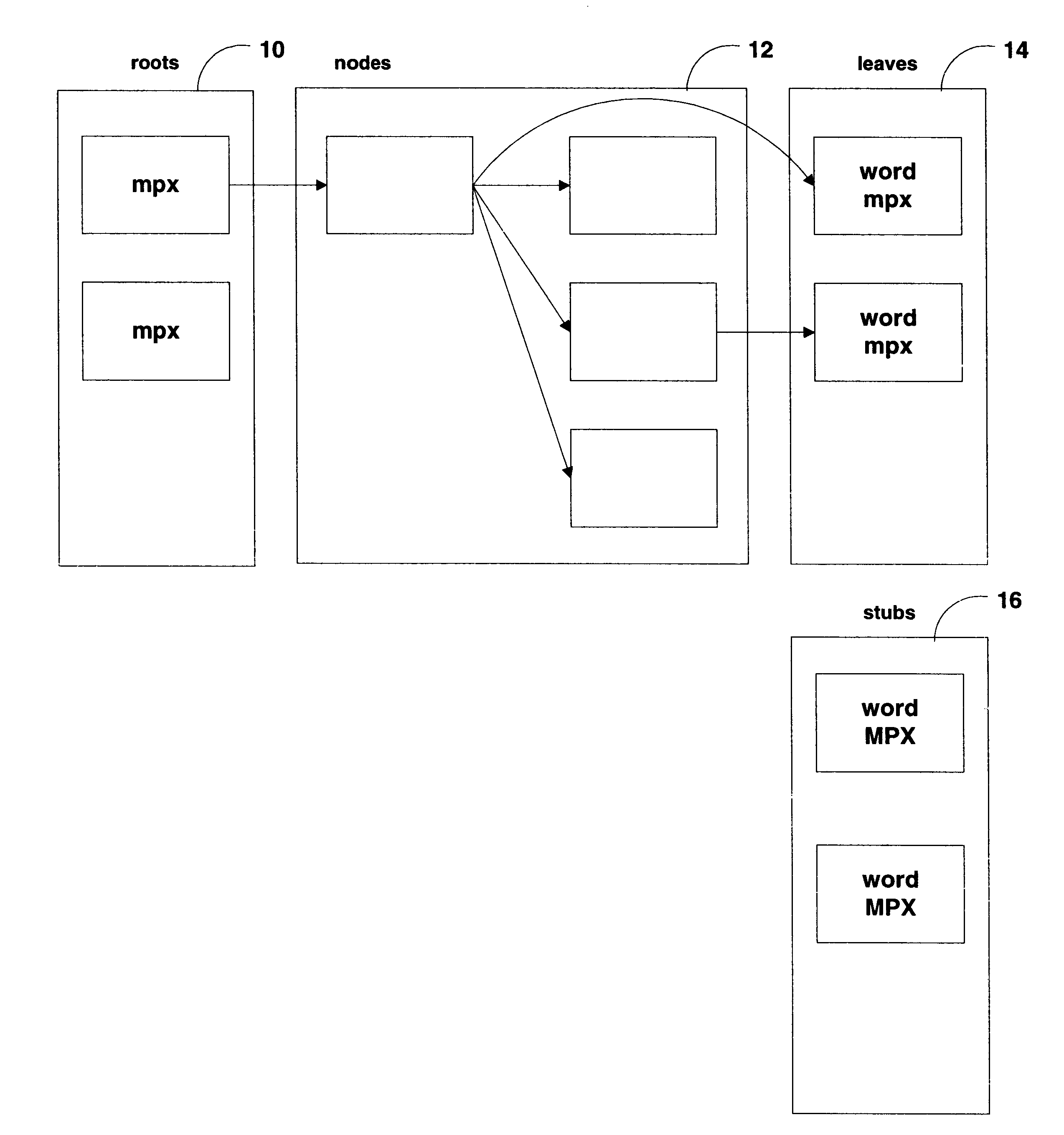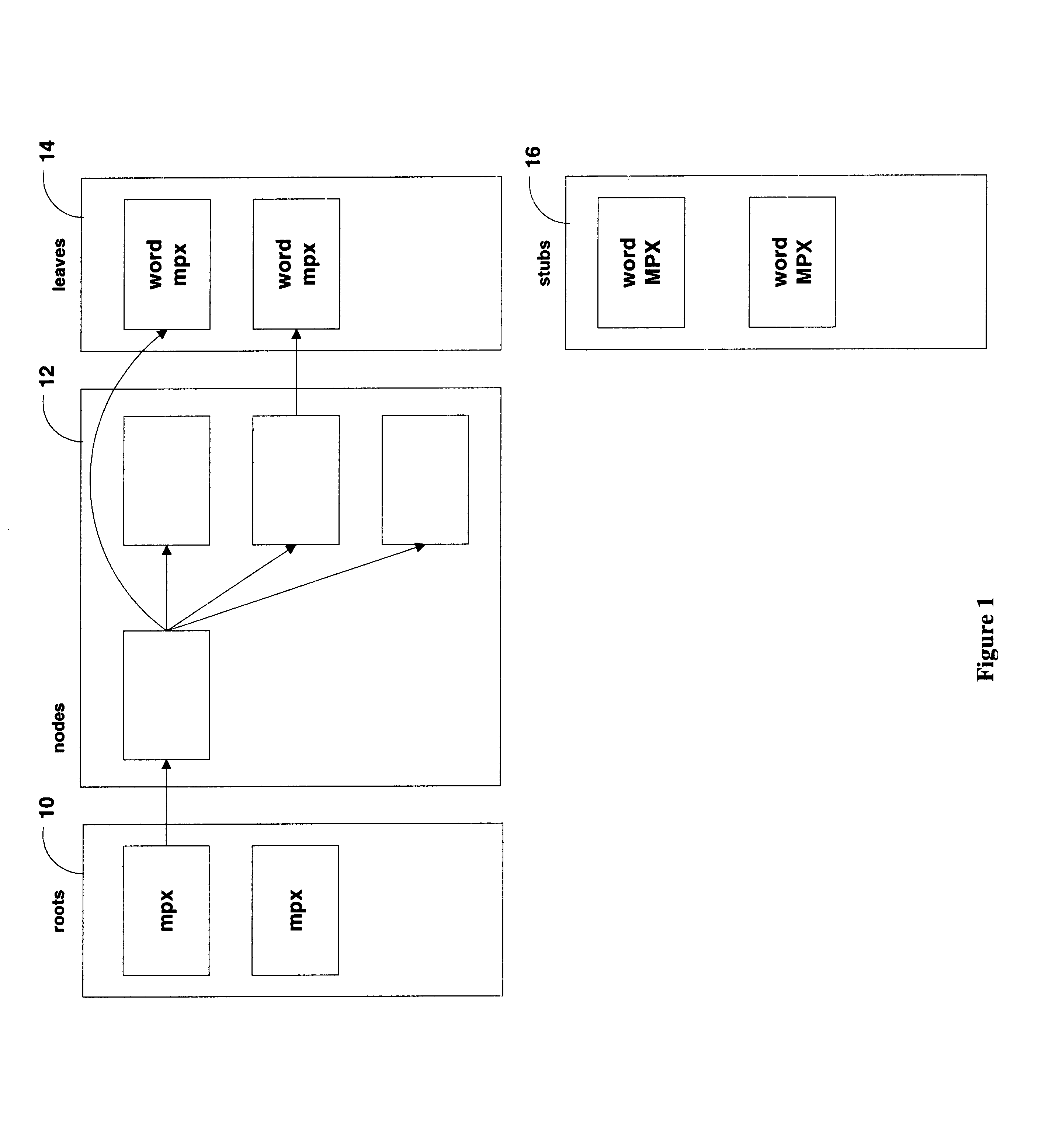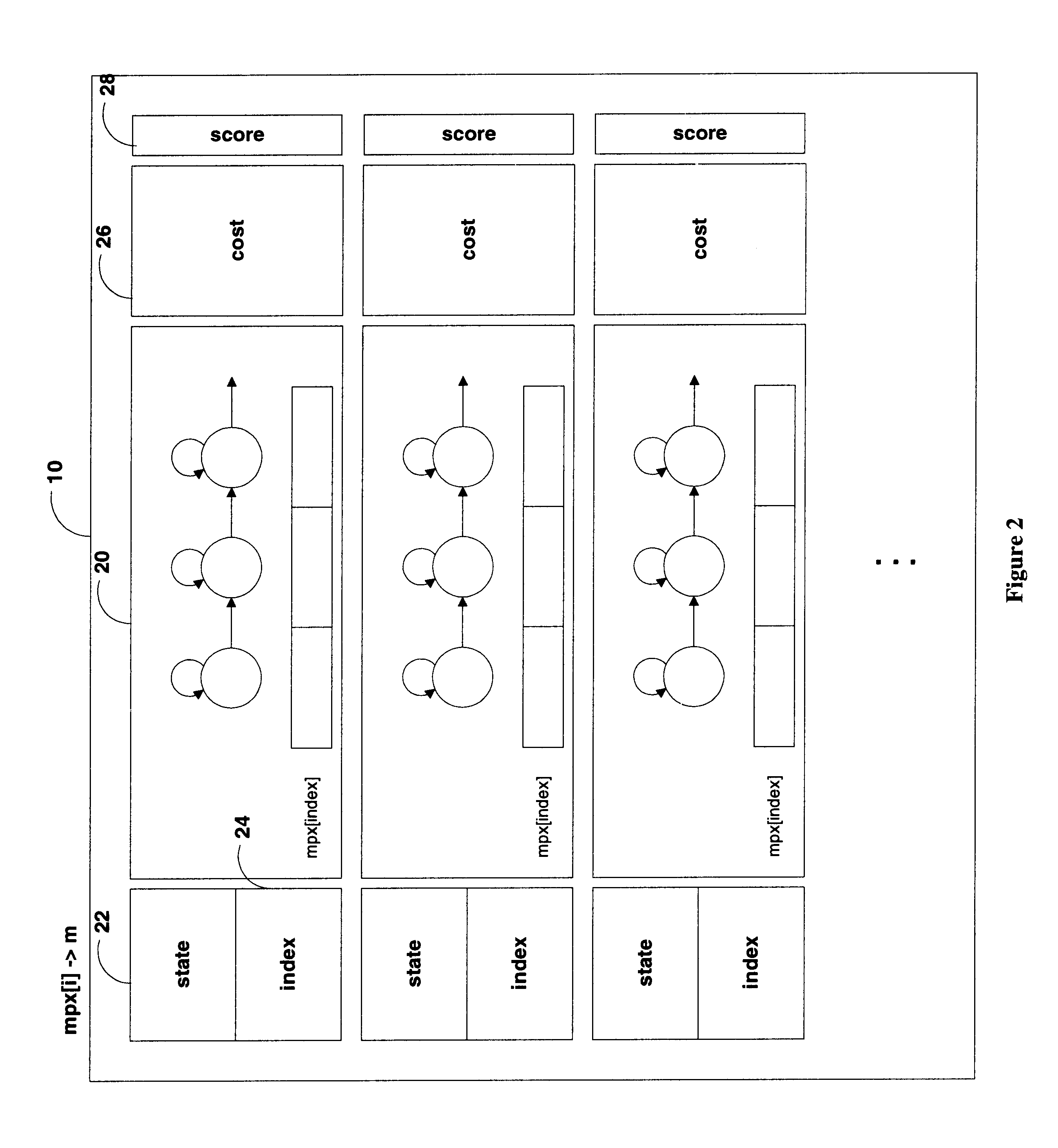Attribute-based word modeling
a word model and attribute technology, applied in the field of automatic speech recognition, can solve the problems of increasing confusability, recognition errors, and ineffectiveness of automatic speech recognition systems to address variations in word pronunciation
- Summary
- Abstract
- Description
- Claims
- Application Information
AI Technical Summary
Problems solved by technology
Method used
Image
Examples
Embodiment Construction
[0012]The foregoing suggests that capturing the complex variability of conversational speech with purely phone-based speech recognizers is virtually impossible. Embodiments of the present invention generalize phonetic speech transcription to an attribute-based representation that integrates supra-segmental non-phonetic features. A pronunciation model is trained to augment an attribute transcription by marking possible pronunciation effects, which are then taken into account by an acoustic model induction algorithm. A finite state machine single-prefix-tree, one-pass, time-synchronous decoder is used to decode highly spontaneous speech within this new representational framework.
[0013]In representative embodiments, the notion of context is broadened from a purely phonetic concept to one based on a set of speech attributes. The set of attributes incorporates various features and predictors such as dialect, gender, articulatory features (e.g. vowel, high, nasal, shifted, stress, reduced...
PUM
 Login to View More
Login to View More Abstract
Description
Claims
Application Information
 Login to View More
Login to View More - R&D
- Intellectual Property
- Life Sciences
- Materials
- Tech Scout
- Unparalleled Data Quality
- Higher Quality Content
- 60% Fewer Hallucinations
Browse by: Latest US Patents, China's latest patents, Technical Efficacy Thesaurus, Application Domain, Technology Topic, Popular Technical Reports.
© 2025 PatSnap. All rights reserved.Legal|Privacy policy|Modern Slavery Act Transparency Statement|Sitemap|About US| Contact US: help@patsnap.com



